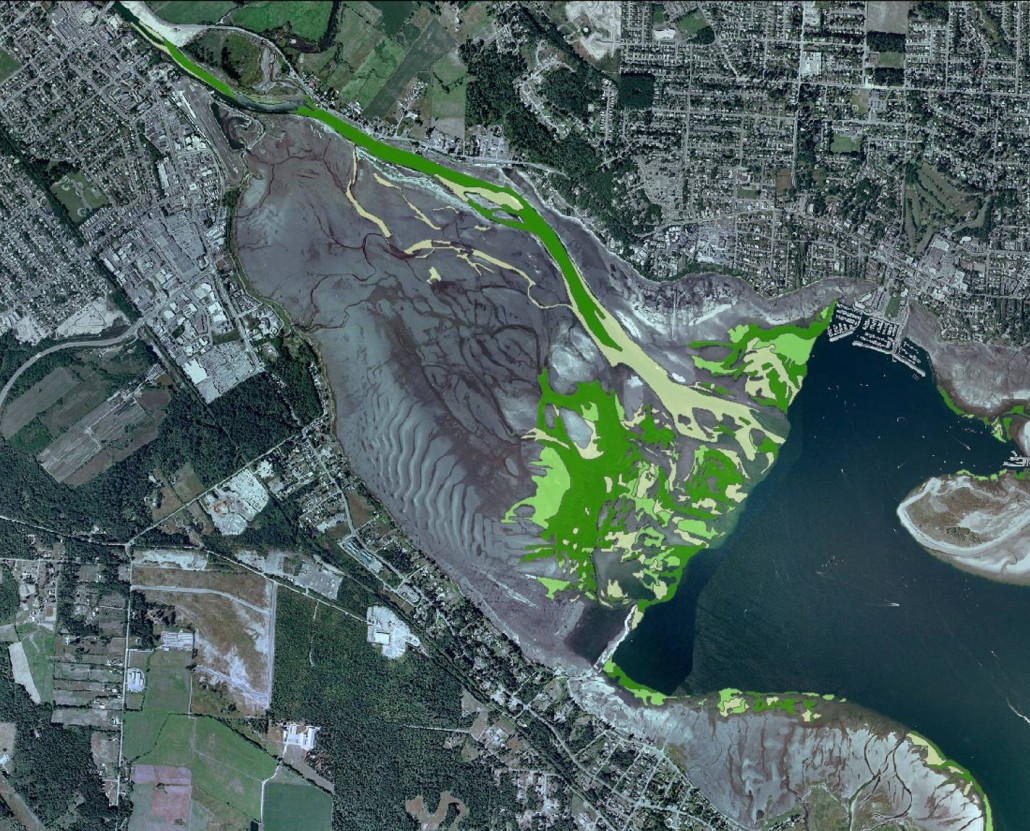The Estuary Working Group
Our Goal
To protect and restore the K’omoks Estuary.
Our Objectives
• To collaborate with local governments to establish an integrated governance system and a plan for protecting and restoring the estuary.
• To establish monitoring projects to gather baseline information on the state of the estuary. This data will be used to determine what needs to be done to restore the health of the estuary.
• To initiate restoration projects.
• To document past human activity in the estuary.
• To Increase public knowledge about estuary issues, health, restoration, and protection through public forums and the dissemination of information.
• To increase public participation in estuary issues, health, restoration, and protection through involvement in monitoring and restoration projects and educational opportunities.
We meet every 2nd Friday to discuss, plan and implement projects aimed at restoration and protection. So far we have created a vision, made some maps and initiated a few projects. Check it out and get involved!
In October of 2008, Comox Valley Project Watershed Society sponsored a major symposium on the Courtenay River Estuary.
Our Vision
From January until September 2009, an estuary working group consisting of individuals from government and environmental groups as well as independent professionals worked on preparing a vision document to help direct the future of the estuary. To guide our vision, we chose a traditional aboriginal principle — Keeping it Living.
Click Here for the complete Keeping it Living Document
The document suggests that one management body with representation from all four governments, experts in the field, and selected local environmental organizations should have responsibility for determining and guiding development and restoration efforts along the shoreline and within the waters of the estuary.
Keeping it Living envisions residents living within the estuary and surrounding area in harmony with the natural life cycles occurring within the estuary and its watersheds. Protecting and restoring the estuary requires the co-operation of local governments.
It requires the voice and passion of all citizens, in our schools, in the workforce, and those who are retired who live in this beautiful Valley. It needs the support of our environmental organizations. It needs the voice and wisdom of K’ómoks First Nation’s teachers and elders. It needs all of us to speak for and on behalf of life as it occurs within our estuary.
The Estuary Working Group and Project Watershed invite all to read the vision document and to become more aware of and involved in the preservation and restoration of this beautiful natural feature of our Valley.
Related Posts
Kus-kus-sum: End of Season Wrap-up
Now that we have put the Kus-kus-sum site to bed for the winter, we wanted to give you all a little update on how things progressed this season – lots happened!
Kate McKeown
Meet our new Forage Fish Technician!
Greenshores at Dyke Road Park – Reimagining a Park
On September 20 and 21, over 20 people were on site to help with planting at the Comox Valley Regional District’s (CVRD) Dyke Road Park redevelopment project.
Gartley Beach Green Shores for Homes Project
Project Watershed is teaming up with the CVRD and the Stewardship Centre for BC to do some shoreline restoration at Gartley Beach in Royston.
Fall and Winter Forage Fish Sampling
We’re gearing up for the fall/winter season of forage fish sampling!
Mallard Creek Riparian Planting
We will be planting native riparian species along a section of Mallard Creek that we recently cleared of invasive Reed canarygrass.


